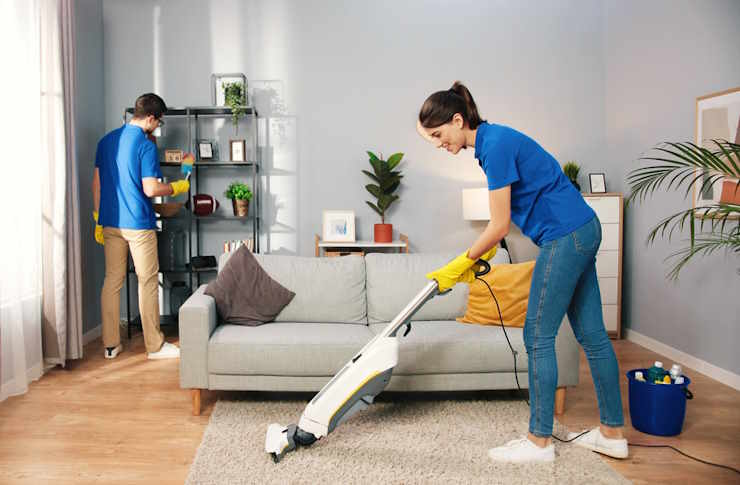Sofa Cleaning Guide: Upholstery Care for Fabric and Leather
A clean sofa improves comfort, extends the life of furniture, and reduces allergens in living spaces. This guide explains straightforward, safe steps for cleaning different upholstery types, managing stains, and protecting nearby carpet and household fabrics. It covers routine maintenance, testing methods, product choices, and when to consider professional local services for deeper cleaning.

How should you clean a sofa?
Start by checking the manufacturer’s care tag and vacuuming cushions, creases, and under cushions with an upholstery attachment to remove loose dirt and debris. For fabric sofas, use a mild detergent solution or a designated upholstery cleaner; always spot-test out of sight. For leather, wipe with a damp cloth and use a pH-balanced leather conditioner sparingly. Avoid over-wetting any upholstery, blot spills instead of rubbing, and allow pieces to dry completely to prevent mildew and shrinkage.
When is upholstery spot cleaning enough?
Spot cleaning is suitable for fresh spills and isolated stains such as food, drink, or ink. Act quickly: blot liquids with a clean cloth, then apply a small amount of cleaner designed for the fabric type. For protein-based stains (blood, sweat), use cold water and enzyme cleaners made for textiles. Repeat gently until the stain lessens, then rinse with a damp cloth. If a stain is extensive, has set over time, or the fabric label warns against DIY treatments, professional cleaning may be advisable.
What cleaning methods suit different furniture fabrics?
Different fibers require different approaches. Synthetic fabrics like polyester tolerate low-moisture steam or hot water extraction, while cotton and linen can shrink if saturated. Microfiber responds well to rubbing alcohol to break down oils, followed by brushing. Velvet and delicate weaves may need dry-cleaning solvents rather than water. Always follow the tag code: W (water-based cleaners), S (solvent cleaners), WS (either), and X (vacuum only). When in doubt, test a discreet area and consult manufacturer guidance.
How to protect adjacent carpet during cleaning?
Cleaning a sofa can affect nearby carpet through drips, runoff, or tracked-in soil. Move the sofa away from carpeted areas if possible, or place drop cloths to catch moisture and residues. When using steam or water-based methods, avoid over-saturating cushions so water does not soak into padding and drip onto carpet. Vacuum carpets before and after sofa cleaning to remove displaced particles. For stains close to both upholstery and carpet, treat the upholstery first, then address the carpet with an appropriate cleaner.
Which products are safe for upholstery stains?
Choose cleaners formulated for upholstery and follow label instructions. Mild dish soap diluted in water works for many synthetic fabrics; enzyme cleaners are effective on organic stains; and solvent-based cleaners are for “S” code fabrics. Avoid bleach and harsh alkalis that can discolor fibers. For odor control, sprinkle baking soda on cushions, let sit, then vacuum. Keep pets and children away during cleaning, and store cleaners securely. Always ventilate the area and wear gloves if using stronger chemicals.
When to hire local services for sofa cleaning?
Consider professional local services when stains are deep, multiple, or involve delicate fabrics such as silk, antique upholstery, or tight weaves. Professionals can perform hot water extraction, low-moisture encapsulation, or specialized solvent cleaning safely and may address padding and frame concerns. Regular professional cleaning is generally recommended every 12–24 months for frequently used sofas, depending on household conditions and manufacturer advice. Ask local services about their methods, drying times, and any guarantees they provide.
Conclusion
Routine vacuuming, prompt spot treatment, careful selection of cleaning methods, and periodic professional servicing together help maintain sofa appearance and longevity while protecting surrounding carpet and other furniture. Always follow manufacturer care labels, test cleaners on hidden areas, and avoid excessive moisture. Thoughtful maintenance reduces odors, allergens, and wear, keeping upholstery comfortable and functional for years.






